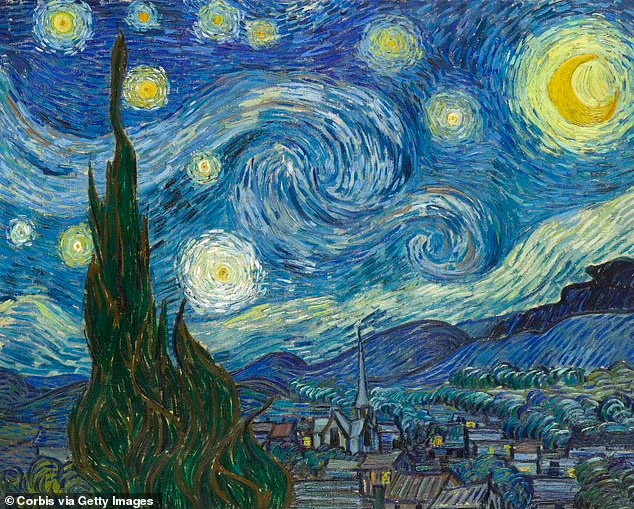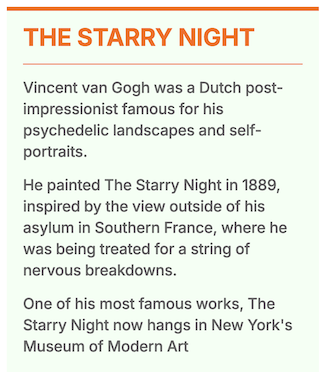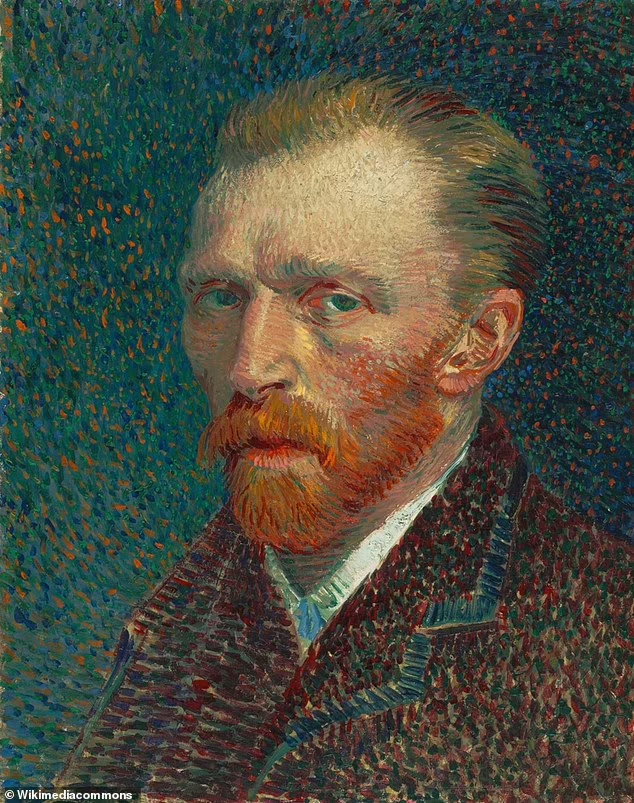Artist used brushstrokes to reveal hidden turbulence in the sky, study reveals

Pictured is Vincent van Gogh’s famous oil-on-canvas artwork ‘Starry Night’, which the Dutch painter created in June 1889
Vincent Van Gogh’s ‘The Starry Night‘ is one of the most famous paintings in the world, recently voted by Brits as the greatest artwork of all time.
Painted in 1889, the painting’s legendary swirling backdrop has long been interpreted as a reflection of the artist’s state of mind.
But a new study suggests the post-impressionist masterpiece – held at the Museum of Modern Art in New York – actually has more scientific merit than history has given it credit.
Researchers in China and France say it’s an accurate reflection of a windy night, showing ‘hidden turbulence’ – swirling masses of air that cannot be seen with the naked eye.
Today, ‘The Starry Night‘ is considered as his magnum opus, but Van Gogh referred to the painting as a ‘failure’ months after he created it.
 Lead study author Yongxiang Huang, a PhD candidate at the Hong Kong University of Science and Technology, said the art ‘reveals a deep and intuitive understanding of natural phenomena’.
Lead study author Yongxiang Huang, a PhD candidate at the Hong Kong University of Science and Technology, said the art ‘reveals a deep and intuitive understanding of natural phenomena’.
‘Van Gogh’s precise representation of turbulence might be from studying the movement of clouds and the atmosphere or an innate sense of how to capture the dynamism of the sky,’ the academic said.
The Starry Night is a famous oil-on-canvas paining created by Vincent van Gogh in June 1889 – a year before his death at the age of 37.
At the time, the Dutchman was in an asylum in Saint-Rémy-de-Provence in Southern France, having voluntarily admitted himself in the aftermath of his ear mutilation the previous winter.
The iconic painting is a depiction of his view out of the window, featuring bright stars and a crescent moon in the night’s sky, with the addition of an imaginary village to complement the scene.
The sky is an explosion of colours and shapes, each star encapsulated in ripples of yellow and white.
Meanwhile, gusts of wind, invisible to the naked eye, are visualized as elaborate swirls – which the researchers call ‘hidden turbulence’.

When he made ‘The Starry Night’, the Dutchman was in an asylum in Saint-Rémy-de-Provence in Southern France. Pictured, Self-Portrait, c.1887, Art Institute of Chicago.
Van Gogh’s brushstrokes create an illusion of sky movement so convincing it led atmospheric scientists to wonder how closely it aligns with the physics of real skies.
For their study, the experts analysed a high-resolution digital image of the painting to unravel the ‘hidden turbulence’ in the painter’s depiction of the sky.
Specifically, they looked at the painting’s 14 main whirling shapes and the spacing between the whirling brush strokes that convey a sense of air movement from one point to another.
According to the researchers, the painting supports a physical theory called ‘cascading energy theory’.
This is where air moves from a larger circular current of air (an ‘eddy’) to a smaller circular current of air.
It also supports Russian mathematician Andrey Kolmogorov’s theory of turbulence, which describes how energy moves and behaves in a fluid when it flows in a chaotic or turbulent manner.
The results suggest Vincent van Gogh had an ‘innate understanding of atmospheric dynamics’ as he captured them with ‘surprising accuracy’.

The authors measured the spacing of the whirling brush strokes in ‘The Starry Night’ along with differences in luminance of the paint, to see if the laws that apply in the physics of real skies apply in the artist’s depiction. The results suggest van Gogh had an innate understanding of atmospheric dynamic
In their new paper, published in Physics of Fluids, the authors conclude the Dutchman made a ‘very careful observation’ of turbulent winds.
‘He was able to reproduce not only the size of whirls/eddies, but also their relative distance and intensity in his painting,’ they write.
It’s unclear if the authors are suggesting van Gogh had an awareness of atmospheric physics that we have all been unaware of until now, or whether it’s just good fortune that the painting aligns with ‘real-world physics’.
Ultimately interpretations about the famous work – a scene which van Gogh recreated from memory because he wasn’t allowed to paint in his bedroom – will continue.
At the very centre of the painting is its largest swirl, which has been interpreted not as hidden air turbulence but another galaxy.
American artist and photographer Michael Benson claimed in 2015 that ‘The Starry Night‘ is a drawing of the Whirlpool Galaxy, officially called M51a.
The Whirlpool Galaxy is about 23 million light-years away and is roughly the size of the Milky Way at about 60,000 light-years in diameter.
But we know ‘The Starry Night’ is not a totally accurate representation of the scene, as the village consisting of houses and a church with distinctive steeple was a product of creative licence.
Records also suggest the moon was going through its waning gibbous phase at the time the artwork was made, meaning it would have looked bigger than the crescent depicted in the top-right corner.
…and then there was Don McLean!
Written by Jonathan Chadwick for The Daily Mail ~ September 17, 2024
